Digital Platforms & Tools
Publisher growth tactics for election season | WEBINAR
Publisher growth tactics for election season | WEBINAR
Home ▸ Digital Platforms & Tools ▸ 6 Best Magazine Apps for Publications on Mobile Devices in 2024
Top Picks
Disclaimer: Our top picks are based on our editors’ independent research, analysis, and/or hands-on testing. Editorial policy
Subscribe to Pubtech Insights

Founder at SODP
The best magazine reader apps can transform static pages into interactive and engaging formats, significantly improving the reading experience on smartphones and tablets.
Mobile device use now dominates how people access the internet, with 91% of those aged 16-64 relying on a mobile device compared with less than 60% who use a personal laptop or desktop. At the same time, demand for unlimited reading access to digital publications is growing strongly.
The global news and magazine app market was valued at $1.18 billion in 2021 and is projected to witness a compound annual growth rate (CAGR) of 11% between 2022 and 2028.
For publishers, selecting the right digital magazine app can be the difference between effectively reaching their target audience or falling behind the competition. These apps’ features, usability and quality play an essential role in delivering content to readers and keeping them engaged.
Let’s explore the six best magazine apps for publications on mobile devices in 2024, shedding light on what to look for and how each app can tailor the digital reading experience to different needs and preferences.
Selecting the right magazine reader app is a strategic decision that must align with a publication’s brand goals and reader preferences. Here are some essential factors to consider:
Publishers need to consider each aspect, as finding the right platform will allow them to create a comprehensive reading experience that resonates with modern users’ demands.
Here is how we rated each platform for different parameters out of 5:
| Tool/company | User Interface (UI) Design | User Experience (UX) | Content Management and Distribution | Monetization Options | Analytics and Reporting | Cross-Platform Availability | Integration with Other Tools | Customer Support | Scalability and Flexibility | Security Features | Publishing and Editing Tools | Compliance and Accessibility | Cost and Value | Score |
|---|---|---|---|---|---|---|---|---|---|---|---|---|---|---|
| MagCast | 3 | 3 | 3 | 3 | 3 | 3 | 3 | 3 | 3 | 3 | 3 | 3 | 3 | 3.0 |
| Pugpig | 5 | 5 | 5 | 4 | 5 | 5 | 5 | 4 | 5 | 5 | 5 | 5 | 4 | 4.7 |
| MobiLoud | 4 | 4 | 4 | 4 | 4 | 5 | 4 | 4 | 4 | 5 | 4 | 4 | 4 | 4.2 |
| Kitaboo | 4 | 4 | 4 | 4 | 3 | 4 | 4 | 4 | 4 | 4 | 4 | 4 | 3 | 3.9 |
| Canvasflow | 4 | 4 | 4 | 3 | 3 | 4 | 4 | 4 | 4 | 4 | 4 | 4 | 3 | 3.8 |
| FlipHTML5 | 3 | 3 | 3 | 3 | 3 | 4 | 3 | 3 | 3 | 3 | 3 | 3 | 4 | 3.2 |
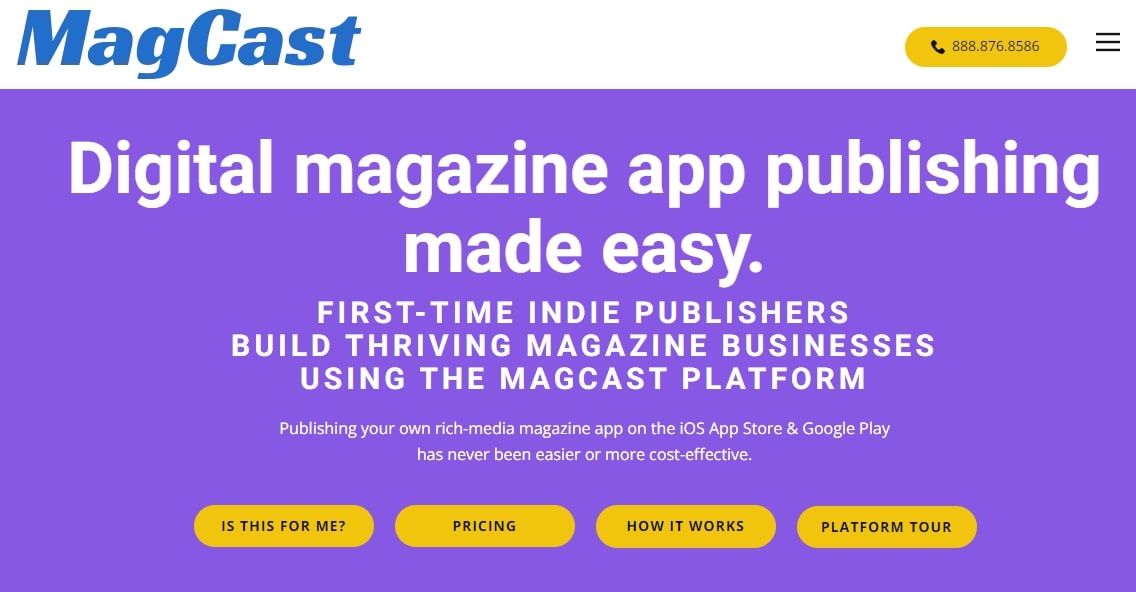
MagCast streamlines the creation and distribution of rich-media magazine apps on both the iOS App Store and Google Play Store.
With its appeal to both seasoned and first-time indie publishers, it has been a choice platform for a wide array of publications. MagCast clients include the likes of DownBeat, Foundr and Wildlife Photographic. MagCast allows publishers to create their own mobile app, providing a dedicated platform for their content.
MagCast provides a drag-and-drop editor for converting PDFs into digital magazines with interactive assets, such as links, audio, video, and more.
MagCast’s pricing structure is worth covering before we delve much further into its features. It’s an unusual approach among SaaS providers in that MagCast offers a single plan that includes all its features, splitting payments into three options:
While it’s more expensive than other options on this list, the approach means MagCast doesn’t have to gatekeep any of its features behind pricing tiers. For example, MagCast offers unlimited readers, subscribers, downloads, issues and special issues.
Users also get their own iOS and Android magazine app, can keep all of their app-store net revenue and sell their magazines on browser-based reader magsfast.com.
MagCast users can also access its extensive knowledge base of training materials, dubbed the MagCast Academy, which includes both how-to guides and business insight articles.
Check out our deep-dive walkthrough and review of MagCast to understand more about its various features and how they work.
Our rating: ★★★ 3.0
Features
Pros
Cons
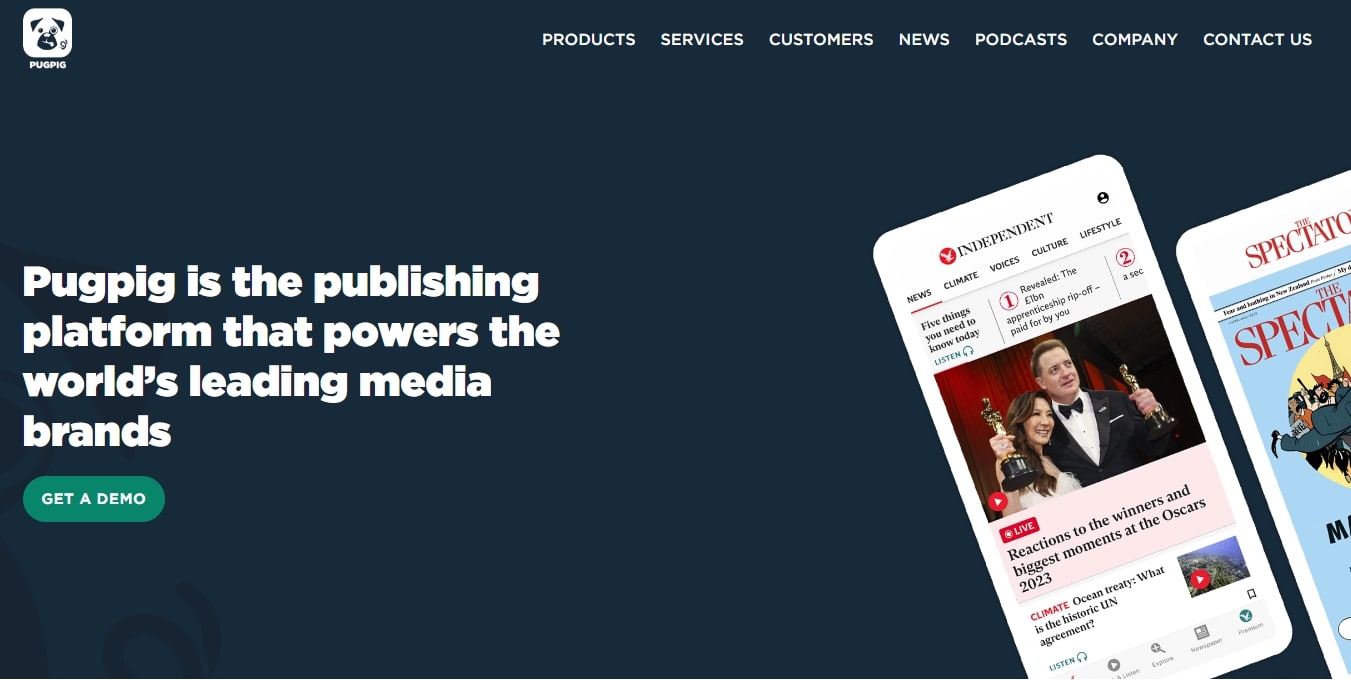
Pugpig has transformed the way leading media brands deliver reading experiences to their audience.
Favored by established publications such as Condé Nast, Hearst and The Independent, Pugpig has attracted more than 170 publishers and 360 leading media brands to its ranks. The platform provides a comprehensive suite of tools to build branded mobile apps.
Pugpig’s Bolt offering allows its users to create mobile apps with bespoke features and customizable curated cards that allow publishers to surface stories, audio and video. It also supports live content feeds, meaning breaking news can be dynamically presented. Pugpig offers a monthly subscription model, making it easier for publishers to manage costs and access a variety of features.
The platform also offers publishers the ability to create streamlined onboarding journeys to help develop their monetization strategies.
Pugpig doesn’t share its pricing structure, meaning interest publishers will need to contact the company directly to discuss their needs.
Our rating: ★★★★☆ 4.7
Features
Pros
Cons
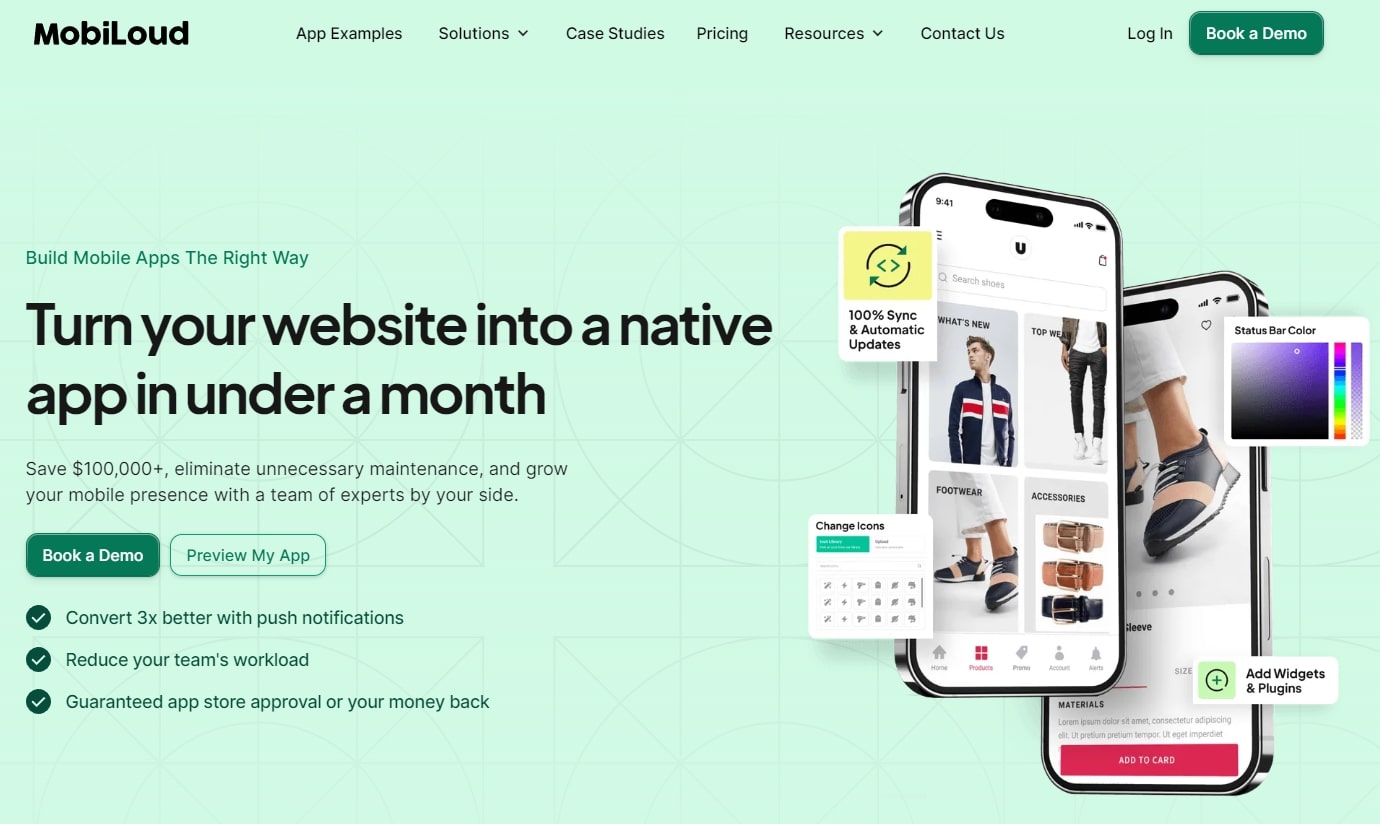
MobiLoud offers a full-fledged solution to build, publish and update apps with a native feel that is designed to help companies sidestep the costly process of building an app from the ground up.
MobiLoud’s track record at streamlining app development and approval processes has attracted the likes of Deeper Blue, Foreign Policy and Simple Flying. Additionally, MobiLoud can be used as a personalized news aggregation service, providing tailored content recommendations and a smooth reading experience.
The platform combines a native tab menu and native navigation to ensure instant accessibility and a familiar feel for iOS and Android users. Moreover, MobiLoud offers unlimited push notifications, automatic rating prompts and social logins.
MobiLoud’s users can fully customize their apps, including the color, logo and custom CSS, and can also implement a custom branded splash screen. Additionally, users can configure the app’s features in real-time via a dashboard rather than having to submit a developer request.
MobiLoud has three plans: Startup, Growth and Corporate. Startup costs $200 per month and offers a native app for iOS and Android and up to 1,000 active users. Growth costs $450 per month and bumps up active users to 10,000, removes MobiLoud branding and provides hands-on technical support. Corporate pricing is negotiated with Mobilous directly and for those that need up to 100,000 active users and extra support features.
Our rating: ★★★★☆ 4.2
Features
Pros
Cons
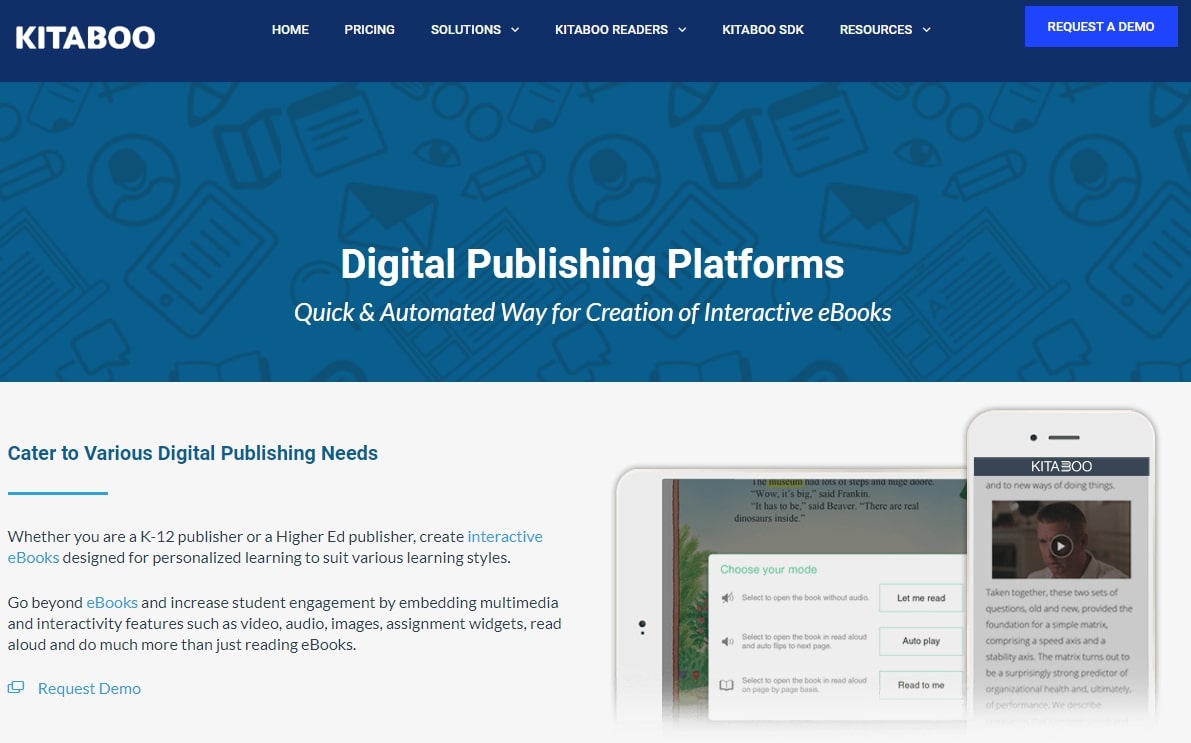
Kitaboo is specifically tailored for the creation, enhancement and delivery of educational eBooks. It also supports magazine publications, making it a versatile platform for various types of content. Catering to sectors such as K-12 education, higher education and corporate entities, and has attracted the likes of Oxford India, Wolters Kluwer and McGraw Hill as clients.
The platform offers a comprehensive system for managing and delivering eBooks for online purchase and free download, complete with onboard customer management, licensing and usage analysis.
Kitaboo provides 128-bit encryption for its publications to ensure their safety while also supporting multiple mobile devices, OSs and browsers. It also offers seamless integration with learning management systems (LMSs) or eStore while ensuring consistent branding and appearance.
Kitaboo doesn’t provide any details on its pricing, preferring prospective clients to contact the company directly to discuss their needs.
Our rating: ★★★☆ 3.9
Features
Pros
Cons
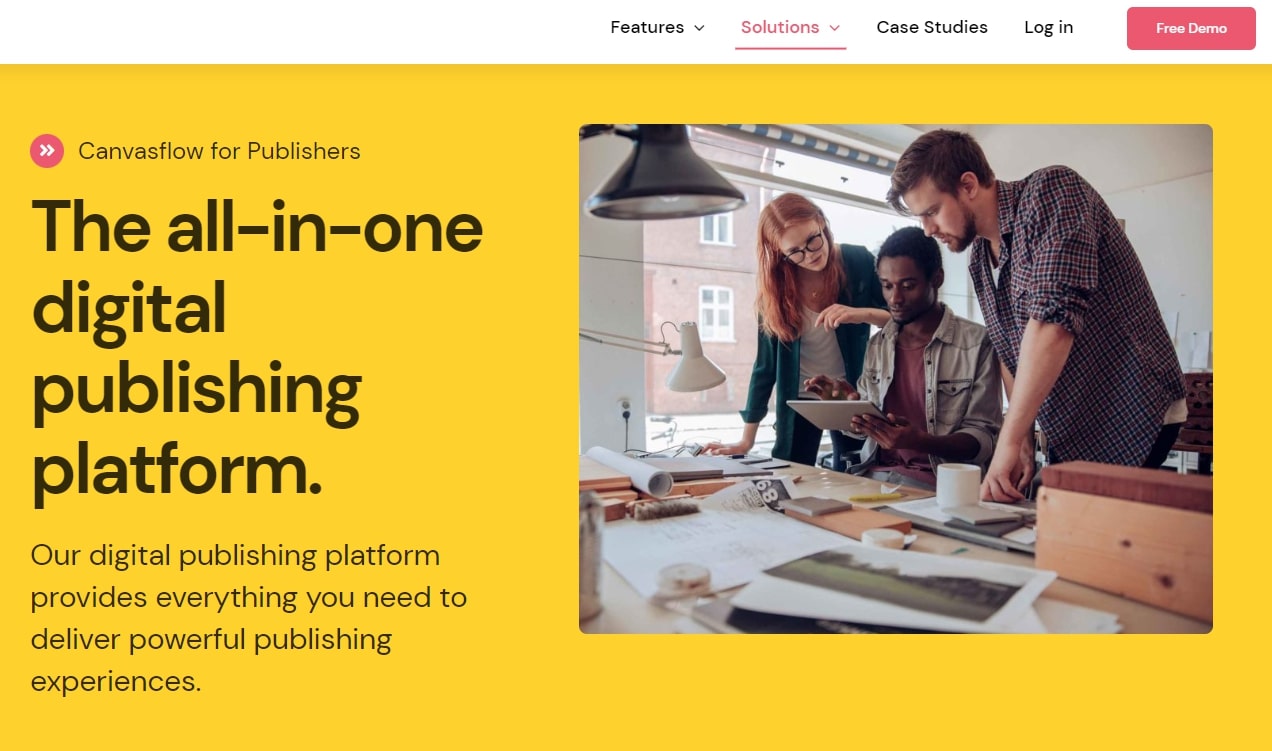
Canvasflow is an all-in-one digital publishing platform that brings the creation and distribution of digital content to a new level. Canvasflow is also an excellent magazine reader app, offering a comprehensive platform for various categories of newspapers and magazines, with features like offline access and affordability.
With a client list boasting names such as Nikon, Reed Business Information Airbus and Smithsonian, its popularity in transforming traditional publications, including graphic novels, into rich digital experiences is well-recognized.
Canvasflow is a no-code platform that leverages a drag-and-drop editor to make the user experience (UX) intuitive. At the same time, it allows its users to customize components — such as images, galleries and videos, among others — to create distinct and immersive digital experiences.
The platform also helps publishers extend their content’s reach through one-click, multi-channel publishing, translation support for up to 20 different languages and a text-to-speech solution.
While Canvasflow offers a free demo, it doesn’t disclose its pricing structure. This means publishers will have to contact the platform to identify what their specific requirements will cost.
Our rating: ★★★☆ 3.8
Features
Pros
Cons
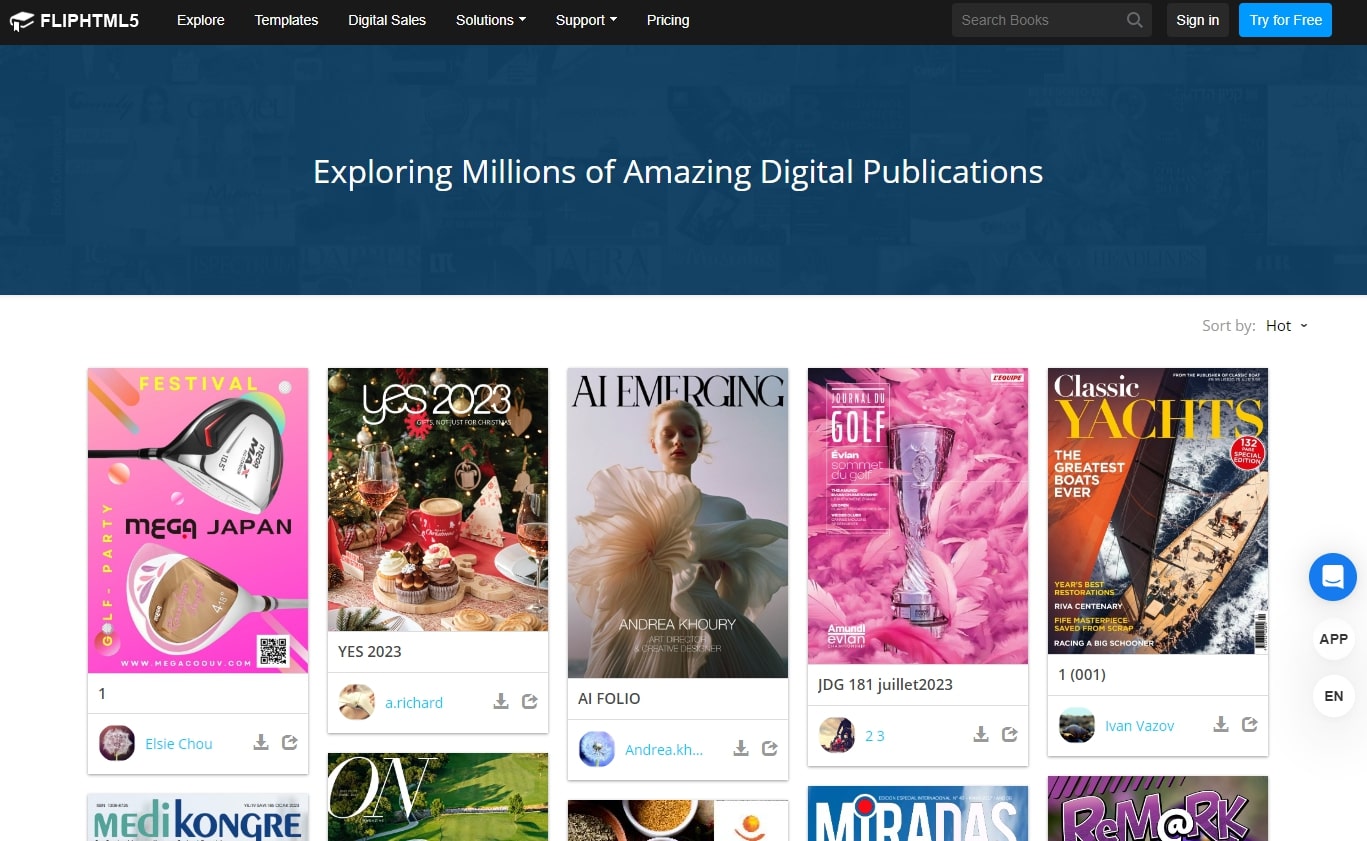
FlipHTML5 offers publishers the ability to transform static documents into interactive flipbooks. Leveraged by well-known clients such as Reuters, USA Today and Casa Vogue, the platform is a proven commodity in the world of magazine apps. Additionally, FlipHTML5 allows users to access and read magazine articles, making it a versatile tool for aggregating various types of content.
FlipHTML5 aims to streamline the content conversion process, automatically optimizing content for search engines, social media, website embeds and more. It allows users to enhance their flipbooks with links, videos, audio, slideshows and more from a vast library of resources. They can also add branding, make content available to download for free and more.
The platform has a free plan as well as three paid tiers. The free plan provides a solid introduction to FlipHTML5’s features, offering access to enough design features and storage for most users to be able to get started and understand its potential use cases.
However, stepping up to the Professional tier unlocks a swathe of options ranging from branding options and API access to unlimited daily uploads and double the number of file page limits per flipbook. Professional costs $15 per month, with a discount available for those who buy an annual subscription.
The Platinum and Enterprise versions cost $35 and $99 per month respectively, with annual purchase discounts. The Platinum tier adds the ability to add multimedia elements to flipbooks, such as video, images and hyperlinks. Enterprise, meanwhile, unlocks access to every feature, including interactive widgets and dynamic assets.
Our rating: ★★★☆ 3.2
Features
Pros
Cons
Magazine apps allow publishers to deliver a great experience to their audience, offering instant access to their favorite magazines on their mobile devices. These apps are specifically designed for the magazine reader, providing features such as access to a wide range of magazine titles, offline reading, and various pricing plans.
They are more than just an extension of a publisher’s print or digital edition; these apps reshape the way readers engage with content.
The need for a robust, agile and responsive mobile presence has never been more important. Yet, there are several excellent options for publishers looking to expand their reach. Choosing the right platform could be the turning point in any publishing journey, leading to greater connectivity, engagement and success.
Related Posts